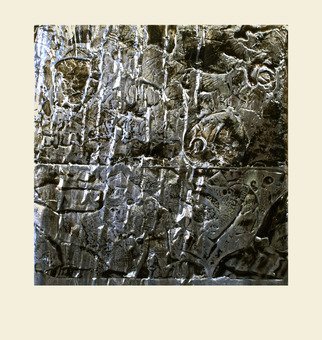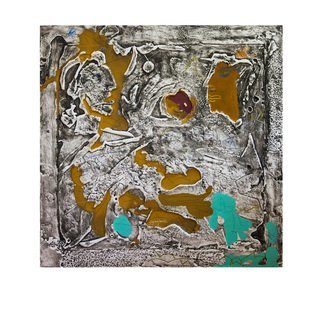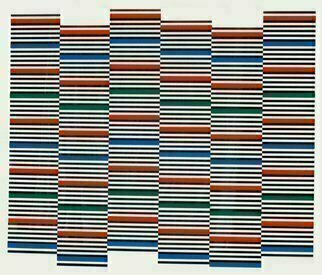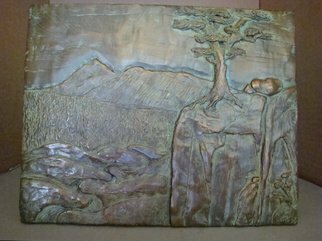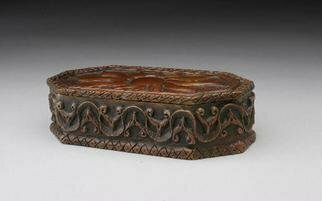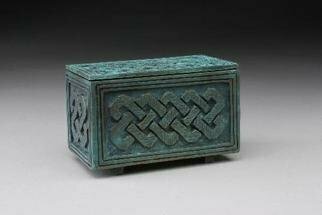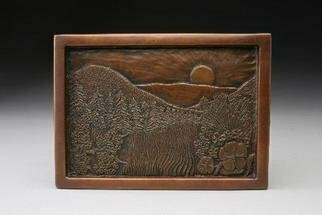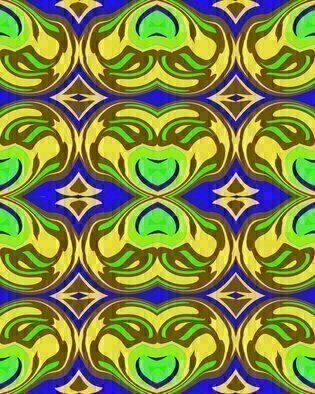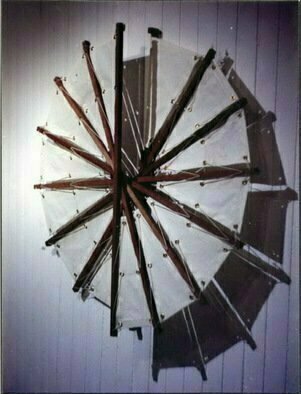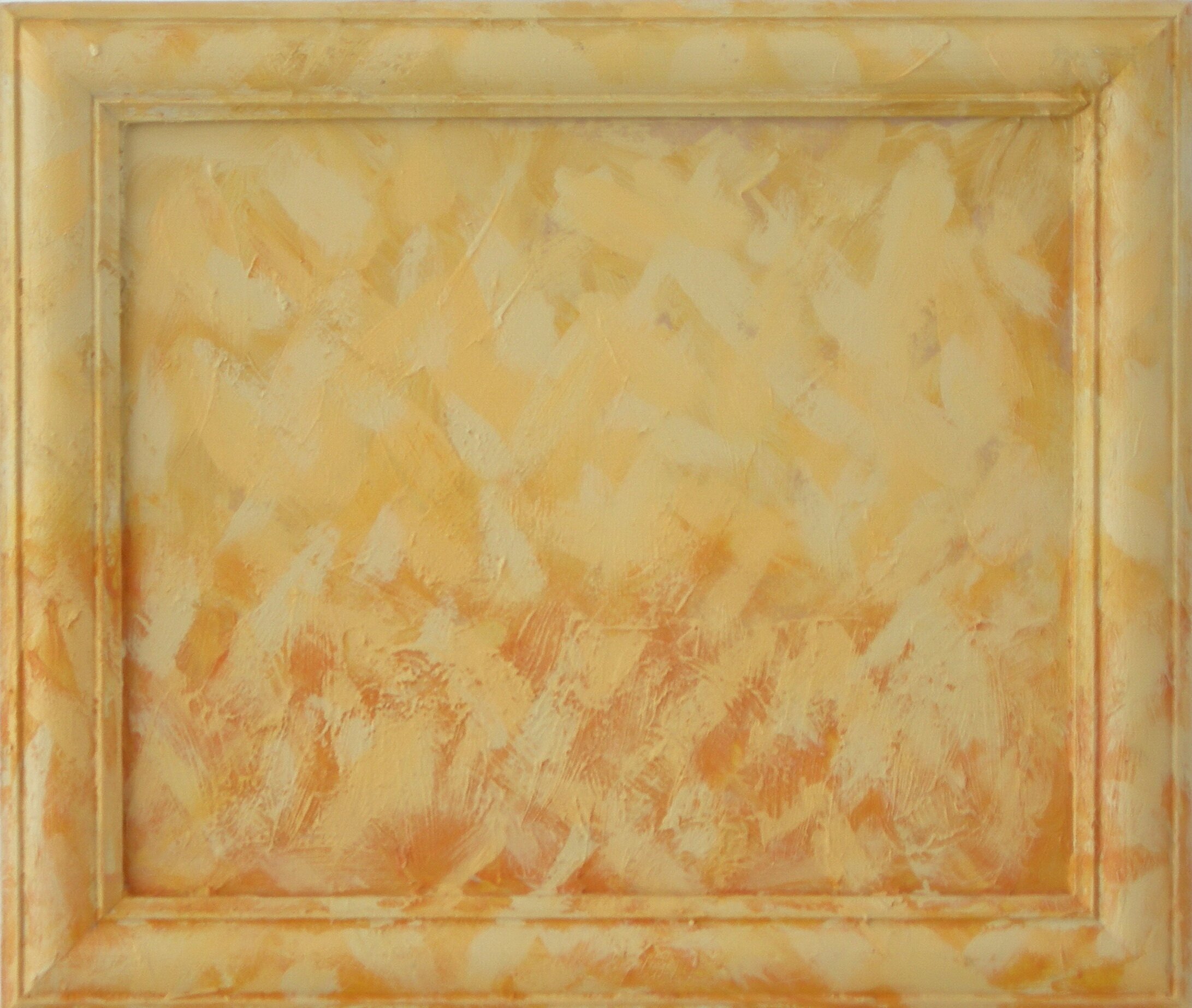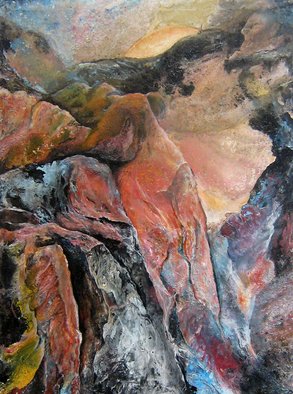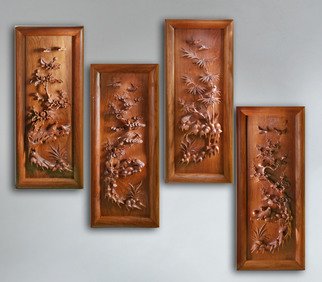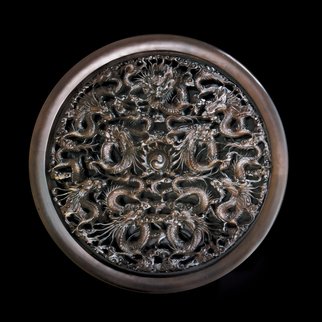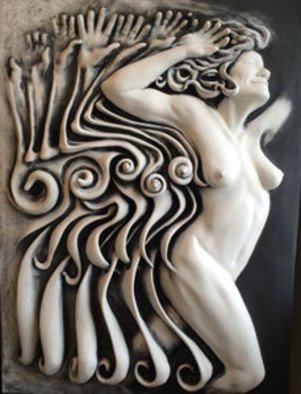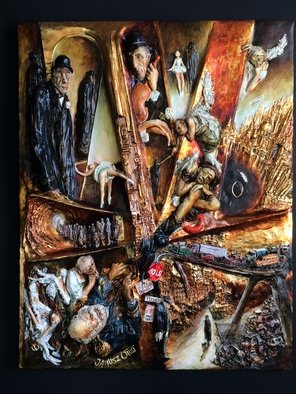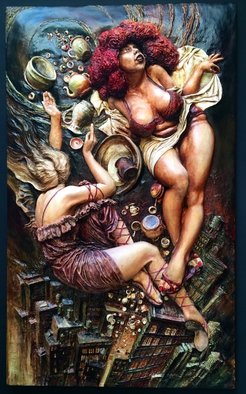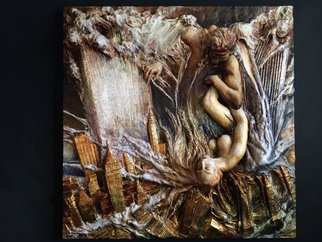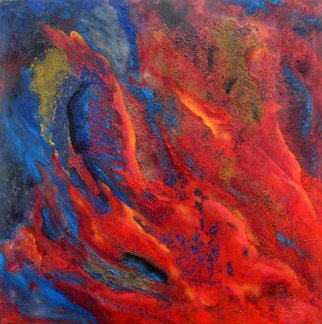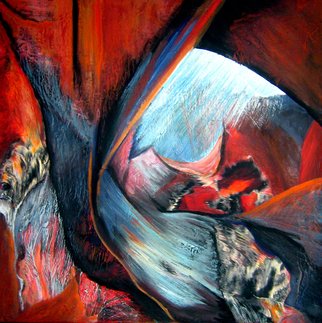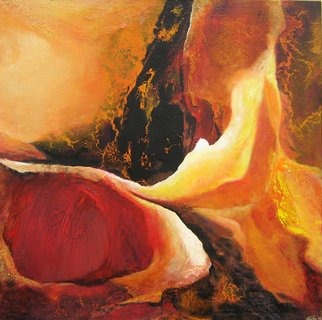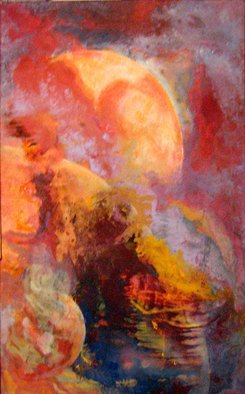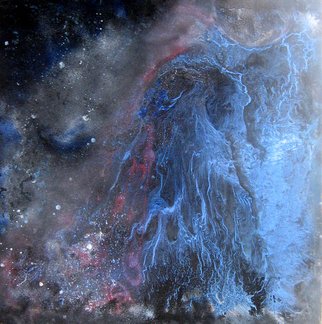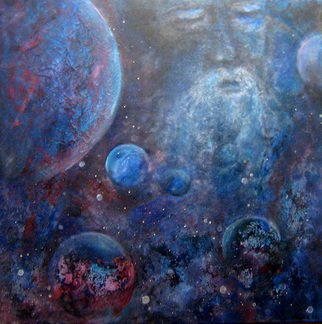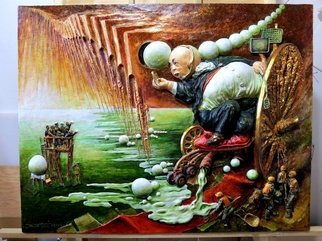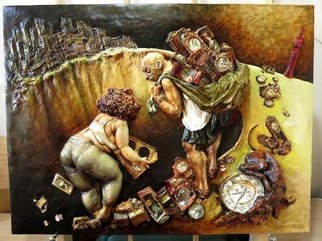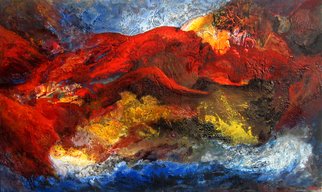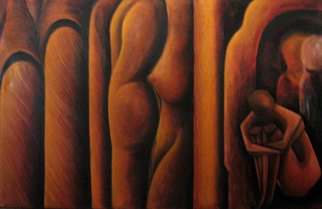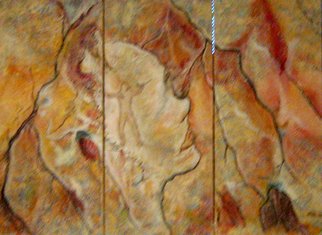Bas Relief Art
Page 1 of 3

Jose Luis Lazaro Ferre, Youri Messen-jaschin, Ted Schaal, Peter Jalesh, David Vanorbeek, Phillip Flockhart, Nacka Kovacic, Pavel Sorokin, Eric Jorgenson, Janusz Obst offering original Bas Relief artworks. A bas relief (French for Relief) is a sculptural technique where the sculpted elements remain attached to the solid background surface of the same material. Coming from the Latin verb "Relevo" it litterally means "to raise". The relief technique has been used in sculpture for thousands of years from Persia to Cambodia and from Ancient Greece to Modern American sculptures thousands of famous artists have used low relief or high relief. During the 20th Century bas relief was mostly used for smaller works or combined with higher relief to portray a sense of distance. Also the intent was to give additional depth to the composition often including figures and a landscape or architectural elements as a background. Notable examples can be found in Egyptian temples such as the Temple of Karnak as well as the Persepolis, Parthenon, the Ishtar Gate of Babylon, Elephanta Caves in India and Mount Rushomore National Memorial in USA. All are examples of varying relief techniques used for an artistic purpose.
Youri Messen-Jaschin - Award 1963 1st Prize of contemporary engraving Center of Engraving Geneva MusA(c)e daEURtmart et daEURtmHistoire Geneva 1966 Grant of the Swedish state for study at the University of Gothenburg research in the textil in Op art 1969 USA Gould corporation 1st prize for the realization of a Op art sculpture 1970 2 nd prize for a textile work - electro-acoustic, University of Gothenburg 1971 1 st prize for a textile work - electro-acoustic, RAPhsska Museum Gothenburg 1985 Italiy Centro Studi e Ricerche delle Nazioni World Culture Award Statue of Victory 1985 1985 Centro Studi e Ricerche laEURtmAccademia daEURtmEuropa Diploma of Appointment of Academician of Europe for its cultural and professional activity 1986 Diploma European SchowmenaEURtms Union For his sincere efforts on behalf of the European ShowmenaEURtms Union we hereby extend our special appreciation to. Bruxelles IV73 1987 Diploma of nomination Golden Elephant for the merits that he acquired to the cause of the circus Schweizer National Circus GebrA1/4der Knie Rapperswil 1998 Installation Award Certificate of Merit Research in Op art Angel Orensanz Foundation, Center for the arts, New York 2000 Aim for Arts, International juried exhibition, celebrating artistic achievement Federation of ...
Ted Schaal - Lately I have been exploring the use of two enduring materials, bronze and stainless steel. I enjoy the juxtaposition of the primitive texture in the bronze with the mirror polished modern look of the stainless. Balance and symmetry dominate simple geometric forms. These sculptures are made to last through the ages with the highest level of craftsmanship and quality metals. Most of my latest work can be scaled up for public or corporate settings and commission inquiries are welcome. With over 20 years of sculpture experience anything is possible from desk top size to monumental fountains and sculpture. ...
David Vanorbeek - Metal speaks to me. Firstly it calls to me, drawing me to it with a magnetic pull that is impossible to resist. I might be walking or driving when suddenly I know for certain that discarded and abandoned metal is nearby, waiting for me to find it. And I always do. And then, when I see the beauty of the metal, it speaks to me again, telling me how it must be worked and shaped into a piece of sculpture that everyone can enjoy and share. For me, the great joy in my work comes from turning something considered worthless into the artwork it becomes. In this way I am showing my respect for the metal. The thread that runs like red wire through all my work is recycling. If I could, I would turn all the old metal and scrap iron I find into a museum of modern art. Just thinking of this idea makes my heart beat faster. My work has developed and taken different directions over the past twenty years, but was originally inspired by insects. In the same way, I see the beauty in these tiny and delicate, but at the same time immensely strong and ...
Phillip Flockhart - STATEMENT After 50 years of image making, journeying through the Da Da, Constructivist, and Minimalist Schools 1970s-1980s I find that my work and my beliefs put me firmly in The School of Expressionism, although my continued belief in the work of Carl Jung, especially his Catalytic Exteriorisation Phenomenon adds another layer of understanding to the traditional Expressionists and places it somewhere more in the Spiritual. My art philosophy formulated over many years practice is actually always present in the content of my work, although themes come and go and reflect other areas of my life and which are influenced by the work of great artists like Kazimir Malevich, Vladimir Tatlin, Juan Gris, Kurt Switters , Marc Chagall, Robert Motherwell, Robert Rauschenberg, Andy Warhol and Joseph Beuys the themes of my art, if examined retain the content of my work which has remained as it has for 35 years now the attempt to disseminate the picture plane to see through and beyond, with colour, real time space, Collage Relief, imagery or optical device, multi point perspective and opto-kinetism, to reveal the truth that lays beyond .... I believe that this is what Marc Rothko meant when he said that his paintings ...
(Page 1 of 3) - MORE ARTWORKS
Artists Describing Their Art:
Jose Luis Lazaro Ferre - I think the easiest way to define my activity as an artist and my intellectual approach to art would be to quote Apollinaire's thesis in his Les Peintres cubistes: meditations esthetiques, especially the following sections: ... Therefore, as an offer to the spirit, in the plastic arts, the fourth dimension should be generated by the three known dimensions: represented by the immensity of space eternally present in all the dimensions of a given moment ... Cubism differs from the painting that came before it because it is not the art of imitation, but the art of thought raised to the level of creation ... Scientific cubism is one of the pure trends. It is the art of painting new compositions with elements taken not from visual reality, but from the reality of knowledge ... Physical cubism is the art of painting compositions with elements taken primarily from virtual reality In my painting, I work with geometric figures arranged on different planes that overlap one another and blend into real shapes (bottles, cats, birds, fruit), fabricated objects (small origami birds and paper boats) and everyday things (hats, shoes, etc.) to create a world of mystery and sensuality. The lines I draw are ...Youri Messen-Jaschin - Award 1963 1st Prize of contemporary engraving Center of Engraving Geneva MusA(c)e daEURtmart et daEURtmHistoire Geneva 1966 Grant of the Swedish state for study at the University of Gothenburg research in the textil in Op art 1969 USA Gould corporation 1st prize for the realization of a Op art sculpture 1970 2 nd prize for a textile work - electro-acoustic, University of Gothenburg 1971 1 st prize for a textile work - electro-acoustic, RAPhsska Museum Gothenburg 1985 Italiy Centro Studi e Ricerche delle Nazioni World Culture Award Statue of Victory 1985 1985 Centro Studi e Ricerche laEURtmAccademia daEURtmEuropa Diploma of Appointment of Academician of Europe for its cultural and professional activity 1986 Diploma European SchowmenaEURtms Union For his sincere efforts on behalf of the European ShowmenaEURtms Union we hereby extend our special appreciation to. Bruxelles IV73 1987 Diploma of nomination Golden Elephant for the merits that he acquired to the cause of the circus Schweizer National Circus GebrA1/4der Knie Rapperswil 1998 Installation Award Certificate of Merit Research in Op art Angel Orensanz Foundation, Center for the arts, New York 2000 Aim for Arts, International juried exhibition, celebrating artistic achievement Federation of ...
Ted Schaal - Lately I have been exploring the use of two enduring materials, bronze and stainless steel. I enjoy the juxtaposition of the primitive texture in the bronze with the mirror polished modern look of the stainless. Balance and symmetry dominate simple geometric forms. These sculptures are made to last through the ages with the highest level of craftsmanship and quality metals. Most of my latest work can be scaled up for public or corporate settings and commission inquiries are welcome. With over 20 years of sculpture experience anything is possible from desk top size to monumental fountains and sculpture. ...
David Vanorbeek - Metal speaks to me. Firstly it calls to me, drawing me to it with a magnetic pull that is impossible to resist. I might be walking or driving when suddenly I know for certain that discarded and abandoned metal is nearby, waiting for me to find it. And I always do. And then, when I see the beauty of the metal, it speaks to me again, telling me how it must be worked and shaped into a piece of sculpture that everyone can enjoy and share. For me, the great joy in my work comes from turning something considered worthless into the artwork it becomes. In this way I am showing my respect for the metal. The thread that runs like red wire through all my work is recycling. If I could, I would turn all the old metal and scrap iron I find into a museum of modern art. Just thinking of this idea makes my heart beat faster. My work has developed and taken different directions over the past twenty years, but was originally inspired by insects. In the same way, I see the beauty in these tiny and delicate, but at the same time immensely strong and ...
Phillip Flockhart - STATEMENT After 50 years of image making, journeying through the Da Da, Constructivist, and Minimalist Schools 1970s-1980s I find that my work and my beliefs put me firmly in The School of Expressionism, although my continued belief in the work of Carl Jung, especially his Catalytic Exteriorisation Phenomenon adds another layer of understanding to the traditional Expressionists and places it somewhere more in the Spiritual. My art philosophy formulated over many years practice is actually always present in the content of my work, although themes come and go and reflect other areas of my life and which are influenced by the work of great artists like Kazimir Malevich, Vladimir Tatlin, Juan Gris, Kurt Switters , Marc Chagall, Robert Motherwell, Robert Rauschenberg, Andy Warhol and Joseph Beuys the themes of my art, if examined retain the content of my work which has remained as it has for 35 years now the attempt to disseminate the picture plane to see through and beyond, with colour, real time space, Collage Relief, imagery or optical device, multi point perspective and opto-kinetism, to reveal the truth that lays beyond .... I believe that this is what Marc Rothko meant when he said that his paintings ...
